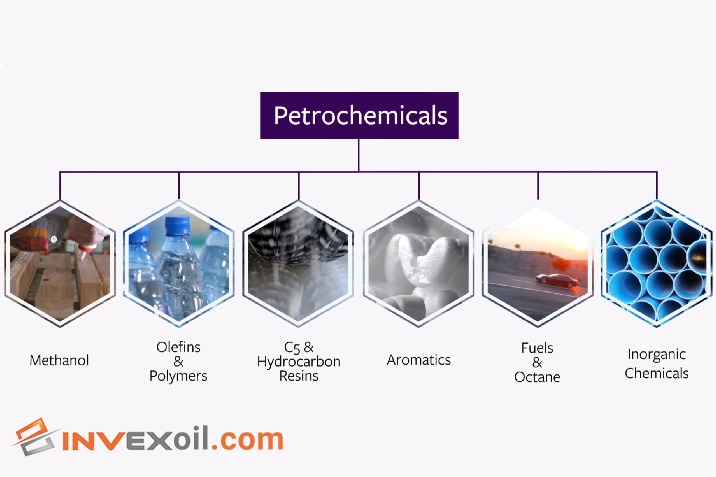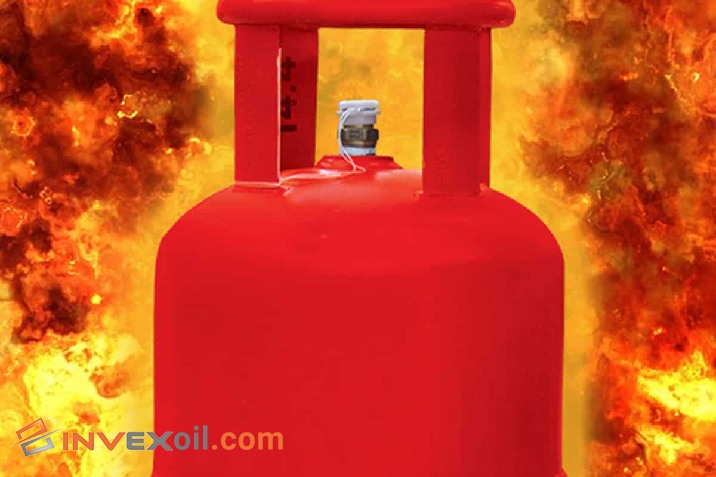Sulfur, a common element in crude oil, poses significant challenges to the oil industry due to its environmental and operational impacts. Remove sulfur from oil is a crucial endeavor to enhance product quality, reduce emissions, and prolong machinery life. This article delves into the multifaceted process of sulfur removal, exploring various compounds, Mineral adsorbents and catalysts, technologies, and methods that drive the industry towards cleaner and more efficient oil refining. Join us on this journey as we unravel the intricacies and importance of eliminating sulfur from oil.
Table of Contents
Crude Oil and hydrocarbons
When it comes to the oil and gas industry, one crucial aspect is the removal of sulfur from oil. Sulfur compounds present in crude oil can have detrimental effects on both the environment and the efficiency of downstream processes. In this article, we’ll delve into the different sulfur compounds found in crude oil, their characteristics, and the significance of their removal in the desulfurization process.
Sulfur Compounds in Crude Oil Hydrocarbons
Sulfur compounds in crude oil can be categorized into four main groups: mercaptans, sulfides, disulfides, and thiophene. These compounds are often undesirable due to their corrosive nature and the emissions of harmful sulfur dioxide during combustion. Let’s take a closer look at each group:
-
Mercaptans: A Type of Sulfur Compound in Crude Oil
Mercaptans, also known as thiols, are sulfur compounds that contain a thiol functional group (-SH). These compounds are notorious for their strong and unpleasant odor, reminiscent of rotten eggs. In the desulfurization process, removing mercaptans is essential not only to improve the quality of the final products but also to reduce foul odors that can lead to environmental and health concerns.
There is a table about the Properties and Effects of Mercaptans.
| Property | Effect and Significance |
| Strong Odor | Causes foul smell in petroleum products. |
| Corrosive | Can corrode pipelines and equipment. |
| Environmental Impact | Contributes to air pollution and acid rain. |
| Desulfurization Importance | Removal enhances product quality and safety. |
-
Sulfides and Disulfides: Sulfur Compounds Overview
Sulfides and disulfides are compounds that contain sulfur atoms connected by chemical bonds. These compounds are problematic as they can form corrosive hydrogen sulfide gas during refining and combustion processes. Efficient removal of these compounds is crucial to prevent equipment damage, ensure operational safety, and minimize environmental harm.
Characteristics of Sulfides and Disulfides are here in this table.
| Characteristic | Impact and Importance |
| Hydrogen Sulfide Formation | Corrosive and toxic gas formation. |
| Equipment Damage | Can lead to corrosion in processing units. |
| Environmental Hazard | Contributes to air pollution and health risks. |
| Desulfurization Significance | Enhances safety and equipment longevity. |
-
Thiophene: Understanding the Sulfur Compound
Thiophene is a heterocyclic compound containing a five-membered ring composed of four carbon atoms and one sulfur atom. It’s a key contributor to the foul odor associated with crude oil. Additionally, thiophene’s presence can lead to increased difficulties during refining processes, making its removal crucial for achieving higher product quality.
Thiophene in Crude Oil – Properties and Significance are gathering here in this table.
| Property | Significance and Impact |
| Odor Source | Contributes to the foul smell of crude oil. |
| Refining Challenges | Can cause operational difficulties. |
| Catalyst Poisoning | Adversely affects catalytic processes. |
| Desulfurization Importance | Improves refinery efficiency and product quality. |
These are some informational details about this topic:
- Mercaptans are known for their pungent odor, often described as similar to rotten eggs.
- Sulfides and disulfides can lead to the formation of corrosive and toxic hydrogen sulfide gas.
- Thiophene’s presence contributes to the unpleasant odor of crude oil and poses challenges during refining.
Desulfurization Technologies
To tackle the challenge of sulfur removal, a range of advanced desulfurization technologies are employed. These technologies are instrumental in ensuring that the final oil products meet stringent quality standards. Let’s explore some key desulfurization methods:
-
Hydrodesulfurization (HDS)
Hydrodesulfurization (HDS) emerges as a prominent player in sulfur removal. This process involves subjecting crude oil to high temperature and pressure in the presence of a catalyst. During HDS, sulfur compounds are chemically transformed into hydrogen sulfide gas, a less harmful compound that can be easily separated. The effectiveness of HDS in reducing sulfur content makes it a cornerstone of the oil refining process.
This table is about Hydrodesulfurization Process Steps.
| Process Step | Description and Importance |
| Hydrogen Addition | Introduces hydrogen to the oil, initiating chemical reactions. |
| Catalyst Action | Catalyst facilitates the conversion of sulfur compounds into hydrogen sulfide. |
| Separation | Hydrogen sulfide is separated from the oil, leaving behind desulfurized oil. |
| Product Quality | Improves the quality of refined oil products by reducing sulfur content. |
-
Oxidative Desulfurization
Oxidative desulfurization presents an innovative approach to sulfur removal. This method involves the oxidation of sulfur compounds, converting them into water-soluble forms that can be easily separated. The use of oxidation agents and catalysts plays a pivotal role in this process. Oxidative desulfurization holds promise in achieving deep desulfurization, especially for refractory sulfur compounds.
Oxidative Desulfurization Mechanism and some other data are here in this table.
| Mechanism | Description and Significance |
| Oxidation Agent | Introduction of an oxidation agent initiates sulfur compound transformation. |
| Catalyst Role | Catalyst accelerates oxidation reactions. |
| Separation | Water-soluble sulfur compounds are separated from the oil phase. |
| Selective Removal | Targets specific sulfur compounds, enhancing efficiency. |
-
Oxidative Desulfurization with Ultrasound Waves
Taking innovation a step further, ultrasound-assisted oxidative desulfurization harnesses the power of sound waves to enhance the oxidation process. Ultrasound waves create cavitation bubbles that promote mixing and increase the contact between the oil phase and the oxidation agent. This method shows potential to improve reaction kinetics and enhance desulfurization efficiency.
Ultrasound-Assisted Oxidative Desulfurization Pros and Cons are provided for you in this table.
| Aspect | Benefits and Considerations |
| Accelerated Reactions | Ultrasound waves enhance mass transfer, speeding up reactions. |
| Efficient Mixing | Cavitation bubbles improve contact between phases, increasing efficiency. |
| Equipment Complexity | Implementation requires specialized equipment. |
| Energy Consumption | Ultrasound generation consumes energy. |
| Reaction Control | Precise control over reactions can be challenging. |
Stay tuned as we delve into other desulfurization methods, shedding light on their unique mechanisms and benefits.
- Hydrodesulfurization (HDS) involves chemical conversion of sulfur compounds using hydrogen.
- Oxidative desulfurization oxidizes sulfur compounds into water-soluble forms.
- Ultrasound-assisted oxidative desulfurization improves efficiency through cavitation-induced mixing.
As we navigate the realm of sulfur removal technologies, the journey promises to unveil more insights and solutions.
Sulfur Analysis Methods
Understanding the sulfur content of crude oil is crucial for effective desulfurization. A range of analysis methods is employed to achieve accurate measurements. Each method unveils distinct insights into the sulfur compounds present. Here’s an exploration of some key sulfur analysis techniques:
1- Xray Fluorescence Spectroscopy for Sulfur Quantification
X-ray fluorescence spectroscopy emerges as a powerful tool for quantifying sulfur content in oil samples. This non-destructive technique relies on the excitation of atoms by X-rays, causing emission of characteristic fluorescent X-rays. The intensity of emitted X-rays corresponds to the sulfur concentration, allowing precise determination of sulfur content.
X-ray Fluorescence Spectroscopy Advantages and Limitations table
| Aspect | Benefits and Considerations |
| Non-Destructive | Sample remains intact during analysis. |
| Rapid Analysis | Provides quick results for efficiency. |
| Multielement Analysis | Can analyze multiple elements simultaneously. |
| Accuracy | Offers accurate sulfur quantification. |
| Sample Size | Larger sample size may be required for accuracy. |
| Instrument Cost | Initial investment for equipment. |
2-Detection of Mercaptans and Other Sulfur Species
The detection of specific sulfur compounds, such as mercaptans, is critical for refining processes. The Dräger tube detection method offers a practical solution. This method employs colorimetric indicators that change in the presence of targeted sulfur compounds. It’s a rapid and convenient approach for on-site analysis, aiding decision-making during refining operations.
Dräger Tube Detection Range for Different Sulfur Compounds are here in this table.
| Sulfur Compound | Detection Range (ppm) |
| Hydrogen Sulfide | 0.1 – 1000 ppm |
| Methyl Mercaptan | 1 – 200 ppm |
| Ethyl Mercaptan | 5 – 400 ppm |
| Dimethyl Sulfide | 5 – 200 ppm |
| Diethyl Sulfide | 5 – 200 ppm |
- X-ray fluorescence spectroscopy provides non-destructive and rapid sulfur quantification.
- Dräger tube detection offers on-site analysis of sulfur compounds, aiding operational decisions.
With an arsenal of sulfur analysis methods, the oil and gas industry gains valuable insights into the composition of crude oil. As we progress, our journey unveils more facets of sulfur removal, ultimately leading to efficient and sustainable oil refining processes.
3-Potentiometric Method for Sulfur Measurement
The potentiometric method steps into the spotlight as a reliable technique for measuring sulfur content in various oil products. Notably, it finds application in gasoline, kerosene, distillate fuels, and even airplane turbines. This method capitalizes on the change in electrode potential as sulfur compounds undergo chemical reactions. It’s a crucial tool for ensuring the adherence to strict sulfur content regulations in different products.
Potentiometric Method Applicability in Various Oil Products table
| Oil Product | Applicability of Potentiometric Method |
| Gasoline | Accurate measurement of sulfur content. |
| Kerosene | Ensures compliance with sulfur standards. |
| Distillate Fuels | Measures sulfur content for quality control. |
| Airplane Turbines | Guarantees safe sulfur levels for aviation. |
4-Active Sulfur Determination in Cutting Oils
Within the context of cutting oils, the determination of active sulfur levels assumes paramount importance. Active sulfur directly affects the performance and longevity of cutting oils in industrial applications. This method involves precise chemical reactions that unveil the concentration of active sulfur. By understanding active sulfur content, industries can optimize cutting processes and minimize wear and tear.
This table contain Active Sulfur Levels in Different Cutting Oils
| Cutting Oil Type | Active Sulfur Level (ppm) |
| Soluble Cutting Oils | 50 – 200 ppm |
| Semi-Synthetic Cutting Oils | 100 – 300 ppm |
| Synthetic Cutting Oils | 200 – 500 ppm |
- Potentiometric method ensures precise sulfur measurement across diverse oil products.
- Determination of active sulfur in cutting oils enhances process efficiency.
As we journey through these sulfur analysis methods, we equip ourselves with tools that enable informed decision-making and effective refining processes. The intricacies of sulfur quantification are vital for producing cleaner and higher-quality oil products.
Conclusion
In conclusion, the removal of sulfur from oil is imperative for the production of high-quality products. Efficient desulfurization processes not only enhance product value but also play a pivotal role in the oil and gas industry’s sustainability journey. By mitigating environmental impact and ensuring smoother operations, the continuous endeavor to Remove sulfur from oil shapes a cleaner and more sustainable future for the industry.
FAQ
here are three frequently asked questions about Remove sulfur from oil along with their answers:
What is the significance of removing sulfur from oil?
Removing sulfur from oil enhances product quality, reduces emissions, and promotes environmental sustainability.
How is sulfur removed from crude oil?
Sulfur is removed through desulfurization technologies like hydrodesulfurization, oxidative desulfurization, and biodesulfurization.
Why is sulfur content critical in oil products?
High sulfur content can lead to environmental pollution and corrosion, affecting both product quality and industry sustainability.

Hello, This is Matteo Hudson Copywriter from InvexOil. We are here to provide super-important content to help you learn more easily and be involved in the world of Petroleum and Chemistry. We are here to answer your questions, help you to have better services, and also find the best solution for your problems. Don’t be shy and ask your questions in the comment box or call our number. If you want to connect with me directly, you can search for my name on Linkedin.





